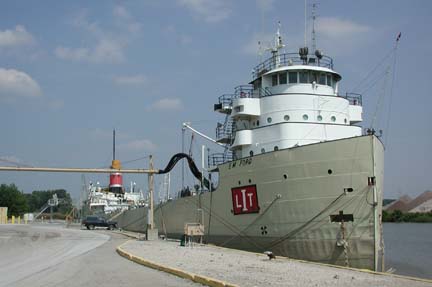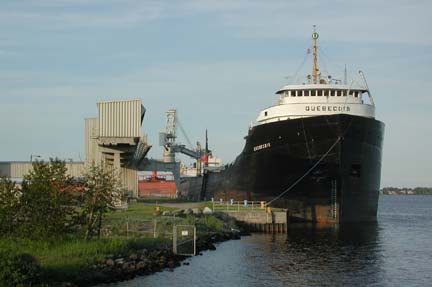
Cement is unloaded at Duluth from bulk carriers,
such as the Quebecois. This particular cargo originated
in Clarkson, Ontario, and takes about two days to unload
from the ship.
Str. Quebecois, Holcim Cement, Duluth, Minnesota
June 8, 2003, Image 03-8994

Cement is imported into the port of Duluth from Canada
for distribution throughout the upper midwest.
The cargo is removed from the hold by air suction.
Str. Quebecois, Holcim Cement, Duluth, Minnesota
June 8, 2003, Image 03-3774

A look inside the cargo hold of the Quebecois.
The cement cargo is unloaded via a screw auger that lifts
the cement out of the hold. The cement is then loaded into trucks and rail cars.
Str. Quebecois, Holcim Cement, Duluth, Minnesota
April 10, 2003, Image 03-3813

The E. M. Ford is used as a storage vessel at
LaFarge's Carrollton, Michigan facility on the
Saginaw River. The Ford is the oldest remaining
bulk carrier on the Great Lakes, built in 1898.
Str. E. M. Ford, LaFarge Cement, Carrollton, Michigan
April 10, 2003, Image 97-4601

The Quebecois unloads at Duluth, Minnesota.
Str. Quebecois, Holcim Cement, Duluth, Minnesota
Image No. 03-3462










